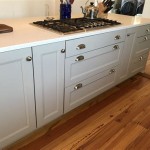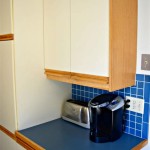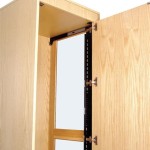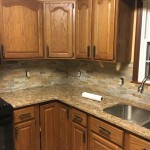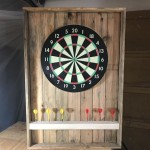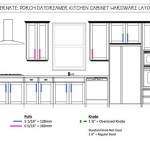Kohler Medicine Cabinet Installation: A Comprehensive Guide
Kohler medicine cabinets offer a blend of functionality and aesthetic appeal, providing valuable storage space while enhancing the overall design of a bathroom. Proper installation is crucial to ensure the cabinet's stability, longevity, and seamless integration into the bathroom environment. This article provides a detailed, step-by-step guide for installing a Kohler medicine cabinet, covering essential preparations, installation procedures, and crucial considerations for a successful outcome. It assumes the reader possesses basic DIY skills and familiarity with common hand tools.
Before commencing the installation process, it is imperative to carefully review the manufacturer's instructions specific to the Kohler model being installed. While this guide provides general instructions, minor variations may exist between models. The manufacturer's instructions will provide the most accurate and up-to-date information for the specific product. Following those instructions diligently will help avoid potential issues and ensure a smooth installation process.
Furthermore, safety should always be the top priority. Wear appropriate safety glasses to protect against dust and debris. Use work gloves to improve your grip and protect your hands. If drilling into walls, be aware of the potential presence of electrical wiring and plumbing pipes. If there is any doubt about the location of these utilities, consult with a qualified electrician or plumber before proceeding. Disconnecting the power to the bathroom circuit can provide an added layer of safety.
Preparatory Steps: Gathering Tools and Materials
Successful installation hinges on having the right tools and materials readily available. Gathering everything beforehand streamlines the process and minimizes interruptions. The following is a list of essential items required for most Kohler medicine cabinet installations:
- Kohler Medicine Cabinet (new, with all included hardware)
- Level (spirit level or laser level)
- Measuring Tape
- Pencil
- Stud Finder
- Drill with assorted drill bits (including appropriate sizes for pilot holes and wall anchors)
- Screwdriver (Phillips head and flathead)
- Wall Anchors (if studs are not available at the desired location)
- Safety Glasses
- Work Gloves
- Caulk Gun (for applying sealant)
- Sealant (mildew-resistant bathroom caulk)
- Shims (for leveling the cabinet, if needed)
- Utility Knife (for opening packaging)
- Dust Mask (optional, but recommended)
- Clean Cloth or Paper Towels
Ensure that all the hardware included with the Kohler medicine cabinet is present and accounted for. Compare the parts list in the manufacturer's instructions with the actual contents of the box. Any missing hardware should be reported to the retailer or manufacturer immediately.
Choosing the correct wall anchors is crucial if the cabinet cannot be directly mounted to wall studs. The type of wall anchor required will depend on the wall material (drywall, plaster, concrete) and the weight of the cabinet, including any items that will be stored inside. Consult with a hardware professional to determine the appropriate wall anchors for the specific application.
Installation Procedure: A Step-by-Step Guide
The following steps outline the general procedure for installing a Kohler medicine cabinet. Remember to refer to the manufacturer's instructions for specific details related to the model being installed.
- Determine the Desired Location: Carefully consider the placement of the medicine cabinet. It should be positioned at a comfortable height for all users. Typically, the bottom of the cabinet is installed approximately 36-42 inches above the finished floor. Ensure that there is adequate clearance around the cabinet for the door to open fully without obstruction. Also, consider the proximity of plumbing and electrical fixtures.
- Locate Wall Studs: Use a stud finder to identify the location of wall studs in the selected area. Marking the stud locations with a pencil is essential for secure mounting. If studs are not available at the desired location, proceed to the next step and use appropriate wall anchors.
- Mark Mounting Hole Locations: Refer to the manufacturer's instructions for the specific hole pattern for the chosen cabinet. Use the provided template (if available) or carefully measure and mark the locations for the mounting holes on the wall. Ensure the marks are level using a spirit or laser level. Accurate marking is critical for a plumb and secure installation.
- Drill Pilot Holes: Using a drill bit slightly smaller than the diameter of the mounting screws or wall anchors, drill pilot holes at the marked locations. If installing wall anchors, follow the manufacturer's instructions for the specific anchor type. Be cautious not to drill too deep, especially if there is a risk of hitting plumbing or electrical wiring.
- Mount the Cabinet: Carefully lift the medicine cabinet into position and align the mounting holes on the cabinet with the pilot holes on the wall. If mounting directly to studs, insert the mounting screws through the cabinet and into the studs. Tighten the screws securely, but avoid over-tightening, which could damage the cabinet or the wall. If using wall anchors, follow the anchor manufacturer's instructions for securing the cabinet.
- Level the Cabinet: Use a level to ensure that the cabinet is perfectly plumb and level. If necessary, use shims to adjust the cabinet until it is properly aligned. Insert the shims behind the cabinet where it contacts the wall. Once the cabinet is level, trim any excess shim material with a utility knife.
- Secure the Cabinet (Final Fastening): With the cabinet properly positioned and leveled, tighten all mounting screws or wall anchors to ensure a secure and stable installation. Double-check the level to confirm that the cabinet has not shifted during the tightening process.
- Apply Sealant (Caulking): Apply a bead of mildew-resistant bathroom caulk along the perimeter of the cabinet where it meets the wall. This will help to seal the cabinet and prevent moisture from entering the wall cavity. Smooth the caulk bead with a wet finger or a caulk smoothing tool for a professional finish.
- Install Shelves and Accessories: Install any shelves, mirrors, or other accessories according to the manufacturer's instructions. Ensure that all components are properly secured and aligned.
- Clean Up: Remove any debris or dust from the cabinet and surrounding area. Clean the cabinet and mirror with a suitable cleaning solution.
Important Considerations for Complex Installations
Certain installation scenarios may present unique challenges that require additional planning and expertise. Addressing these potential issues proactively can prevent complications and ensure a successful outcome.
Recessed Installation: When installing a recessed medicine cabinet, the wall cavity must be appropriately prepared to accommodate the cabinet's dimensions. This may involve cutting into the wall studs and reframing the opening. Extreme caution is necessary to avoid damaging electrical wiring, plumbing, or structural components. Recessed installations often require the skills of a qualified carpenter or contractor.
Tiled Walls: Drilling into tiled walls requires specialized drill bits designed for tile. Using the wrong type of drill bit can cause the tile to crack or shatter. Applying masking tape over the drilling location can help to prevent chipping. Drill slowly and apply gentle pressure to avoid damaging the tile. Consider hiring a professional tile installer if you are not comfortable drilling into tile.
Surface-Mount Installation with Electrical Connections: Some Kohler medicine cabinets include integrated lighting or electrical outlets. These models require a direct electrical connection. Wiring the cabinet should only be performed by a qualified electrician, adhering to all local electrical codes. Never attempt to wire the cabinet yourself unless you possess the necessary expertise and qualifications. Improper wiring can create a serious safety hazard.
Heavy Cabinets: Larger medicine cabinets, especially those with heavy mirrored doors, may require additional support to ensure a secure installation. Consider adding extra wall anchors or reinforcing the wall studs to handle the weight. Consult with a hardware professional to determine the appropriate support measures for the specific cabinet and wall construction.
By carefully following these installation steps and considering potential complexities, the installation of a Kohler medicine cabinet can be a relatively straightforward process. Prioritizing safety, meticulous planning, and adherence to the manufacturer's instructions will contribute to a successful and aesthetically pleasing result.

Kohler 3073 Archer 20 W X 31 H Aluminum Single Door Medicine Cabinet Beveled Edges

Complete Install Kohler Mirror Medicine Cabinet R32067 Na How To Diy

Kohler K 99001 Verdera Medicine Cabinet Owner S Manual

Kohler K 99011 Tlc

Kohler Maxstow 20 In W X 24 H Rectangular Surface Mount Medicine Cabinet With Mirror And Enhanced Storage K R79224 La1 The Home Depot

Installation Recessed Mount Aluminum Frame Medicine Cabinets

Kohler K 35569 Verdera 15 X 30 Inch Rectangular Framed Medicine Cabinet Instruction Manual

Kohler 99009 Tlc Verdera 34 X 30 Two Door Lighted Medicine Cabinet Left Hinged

Kohler 99007 Tlc Verdera 24 X 30 Lighted Medicine Cabinet

Instructions On How To Adjust Doors For Kohler K Cb Clc3026fs Medicine Cabinets
Related Posts


